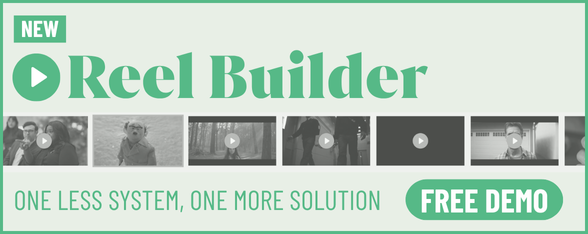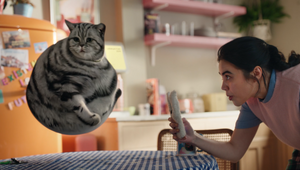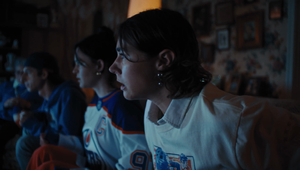
Timing, Collaboration and the Art of Crafting a Story with Joaquin Machado

Joaquin Machado is an award-winning editor at Abandon Editorial, celebrated for his sharp comedic timing and offbeat storytelling style.
Known for crafting memorable, quirky spots, Joaquin has collaborated with top brands and agencies across the country. He began his career in the vault at Nomad, quickly rising through the ranks to become an assistant editor. After honing his skills at HutchCo, DriveThru, Beast, and Uppercut, Joaquin joined Abandon's team in 2024 where his distinctive voice continues to shine.
His work spans major markets including Los Angeles, New York, San Francisco, Austin, Atlanta and Minneapolis, and he’s collaborated with celebrity talent such as Peyton Manning, David Hasselhoff, James Harden, Chris Pratt, Amy Poehler and Guy Fieri.
Joaquin’s editorial credits include campaigns for BMW, Gatorade, Toyota, Skippy, King’s Hawaiian, Trolli, Harrah’s, Subaru, Denny's and EA, among other global brands.
LBB> The first cut is the deepest: how do you like to start an editing project?
Joaquin> After reading the script and looking through any boards we have, I take my time and watch all of the footage. It’s amazing how often you can find a great reaction or look in between takes when the actor’s guard is down.
Once I’ve looked at everything and arranged my selects, I like to block out several edits. I always cut a version as close to what’s boarded as possible, but I also try to do a version that gives my perspective. Then, usually, I create a version that is as streamlined as possible, and maybe a version that uses any angles that aren’t being used in the other versions, just so clients can see how they do or don’t work.
LBB> Non-editors often think of editing just in technical terms but it’s integral to the emotion and mood of a film. How did you develop that side of your craft?
Joaquin> I was just very fortunate to be able to learn from some amazingly talented and kind editors over the years. I was an assistant to several editors, but particularly Tom Muldoon and Jim Hutchins, who were amazing mentors to me. They really taught me a great deal about timing, collaborating with people, and how to craft a story.
LBB> How important is an understanding of story and the mechanics of story?
Joaquin> I think it’s incredibly important. There needs to be an arc, even if it is a 15-second cutdown. A story needs a build and release of tension. Whether that’s setting up a joke and landing it in 30 seconds, or an exciting montage that resolves to a satisfying conclusion, each edit needs to be a complete story.
LBB> Rhythm and a sense of musicality seem to be intrinsic to good editing (even when it’s a film without actual music) – how do you think about the rhythm side of editing, how do you feel out the beats of a scene or a spot? And do you like to cut to music?
Joaquin> I was a musician before I was an editor, and I do like to cut to music. Music plays such a large part in setting the mood and tone of a spot. I think it is very helpful to determine what is going to be driving the edit.
Often, if the spot is very dialogue-heavy, music is more in the background and just helps to set a mood. But, if the spot is more about visuals or VO, the music has a tremendous impact on the pacing and rhythm of the shots.
LBB> In the US we know that editors are much more heavily involved across the post production process than in Europe - what’s your favourite part of that side of the job?
Joaquin> I feel like we’re not as involved as we used to be, but my favourite part of that side is probably the mix.
During edit sessions, I never feel like I have enough time to really do the sound design I want, and I love being able to take several hours with a really talented person and fully develop that part of the project.
LBB> What’s harder to cut around – too much material or not enough? (And why?)
Joaquin> I prefer having too much footage. It may take longer, but there are more options to solve the problems that arise in an edit.
Not enough often means the shot you need is just not there. It can force you into being creative in new ways, but it can also force compromises and workarounds that may not be ideal. That said, not enough is often easier because your options are limited… but too much usually ends up with a better product.
LBB> Which commercial projects are you proudest of and why?
Joaquin> I am really proud of the work I’ve done with BMW, especially the ‘Big Red Bow’ and ‘Ultimate Match’ spots. I’ve always been a fan of car commercials, and I think these do a good job of combining humour with beautiful footage of the cars.
I’m also very proud of the really weird spots I’ve done over the years that I find really funny, like Denny’s’ ‘Nannerpuss’, Hint’s ‘Pie Eating Contest’, Trolli’s ‘Harden’s Head’, and Harrah’s’ ‘Funner Mayor David Hasselhoff’.
LBB> There are so many different platforms for film content now, and even in advertising something can last anything from a few seconds to a couple of hours. As an editor, are you seeing a change in the kind of projects you’re getting from brands and agencies?
Joaquin> I am seeing more openness to runtimes other than 15, 30, and 60 seconds. Depending on where the final product is going to live, sometimes we can just let a spot be the runtime it feels best at. I’m also doing more longer-form, online-only content.
LBB> Who are your editing heroes and why? What films or spots epitomise good editing for you?
Joaquin> Tom Muldoon and Jim Hutchins are probably the editors who influenced me the most – not only for being very talented editors, but also for showing me how to collaborate on projects with kindness and respect. I think good editing can take many different forms.
I like the editing in Edgar Wright’s films, old ‘Bugs Bunny’ cartoons, and Old Spice commercials. I like editing that feels so natural you forget that those decisions were ever being made and you can’t imagine the sequence playing out differently, as well as editing that is very intentional, stylised, flashy, and in your face.
LBB> Have you noticed any trends or changes in commercial editing over recent years?
Joaquin> The big change is that it seems like everybody is doing more with less. Project deadlines that were unheard of a few years ago are now the norm. Also, there are more types of cutdowns and social-only components for projects.















